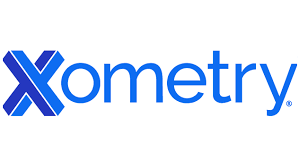Learning & Development Business Partner
Xometry (NASDAQ: XMTR) powers the industries of today and tomorrow by connecting the people with big ideas to the manufacturers who can bring them to life. Xometry’s digital marketplace gives manufacturers the critical resources they need to grow their business while also making it easy for buyers at Fortune 1000 companies to tap into global manufacturing capacity.
We are seeking a highly strategic, results-oriented, and dynamic Learning & Development Business Partner to be the architect of our organization's capability. This pivotal role will be responsible for creating a future-ready workforce by deeply understanding our talent development needs, defining the skills required for success, and building high-impact learning programs. You will blend planning and design with hands-on facilitation and delivery, ensuring learning is impactful, measurable, and directly closes skill gaps to drive business success.
Key Responsibilities
Talent Architecture & Needs Assessment
- Design & Implement Career Architecture: Partner with HR and business leaders to define, refine, and champion the organization's career architecture (job families, levels, and career paths) to provide transparency and clear progression opportunities for all employees.
- Define Skills & Competencies: Conduct comprehensive, data-driven skill and competency gap analyses across critical roles and functions, aligning the requisite knowledge, skills, and abilities with career levels for a high-capability organization.
- Ongoing Needs Analysis: Proactively identify future organizational skill requirements driven by business strategy, technology changes, and market trends.
- Stakeholder Consultation: Serve as a trusted consultant to senior leadership and People Business Partners to align learning priorities with strategic business objectives.
Learning Program Strategy, Delivery, & Impact
- Curriculum Development Strategy: Architect a cohesive, multi-modality learning strategy and curriculum that directly addresses the identified skill and competency gaps, ensuring a clear path for development across all career stages.
- Program Design for Impact: Design, develop, or curate the most impactful learning solutions (e-learning, blended, coaching, on-the-job training) applying adult learning principles to drive measurable behavioral and performance improvement.
- Facilitation and Delivery: Lead and facilitate high-impact learning sessions (in-person and virtual) for various organizational levels, including core skill-building, leadership development, and strategic team workshops.
- Measurement & Evaluation: Establish and track key metrics (e.g., Kirkpatrick's levels, skill proficiency scores, talent mobility, and business impact/ROI) to measurably improve skills and demonstrate the value and effectiveness of all learning investments.
- Drive Learning Culture: Champion a culture of continuous learning, self-development, and internal knowledge sharing.
Content Curation & Partnership Management
- Content and Partner Mapping: Conduct an inventory of existing internal content, learning partners/advocates (internal Subject Matter Experts, mentors, coaches), and available external partners and sources (vendors, platforms, educational institutions).
- Strategic Sourcing: Establish and manage strategic relationships with external learning vendors and consultants, overseeing contracts and ensuring high-quality, cost-effective content delivery that aligns with our strategic needs.
- Internal Collaboration: Collaborate closely with internal learning advocates and Subject Matter Experts (SMEs) to ensure all learning content is technically accurate, relevant, and aligned with company best practices, and coach them for effective co-facilitation.
- Content Lifecycle Management: Ensure all learning content remains current, engaging, and accessible across the appropriate learning technology platforms (LMS, LXP).
Qualifications
- Education: Bachelor's degree in Human Resources, Organizational Development, Instructional Design, or a related field. Master's degree or CPTD/ATD certification preferred.
- Experience: 10+ years of progressive experience in Learning & Development, Talent Management, or Organizational Effectiveness.
- Expertise: Deep, demonstrated experience in developing career architecture models, competency frameworks, and skills-based development pathways. Proven track record of highly engaging facilitation and training delivery.
- Skills: Expertise in instructional design methodologies, strong consulting and stakeholder management skills, and proven ability to define and use learning analytics to measure business outcomes.
- Soft Skills: Excellent verbal and written communication, project management, and the ability to influence leaders at all levels.
Xometry is an equal opportunity employer. All applicants will be considered for employment without attention to race, color, religion, sex, sexual orientation, gender identity, national origin, veteran, or disability status.
For US based roles: Xometry participates in E-Verify and after a job offer is accepted, will provide the federal government with your Form I-9 information to confirm that you are authorized to work in the U.S.
Create a Job Alert
Interested in building your career at Xometry? Get future opportunities sent straight to your email.
Apply for this job
*
indicates a required field
